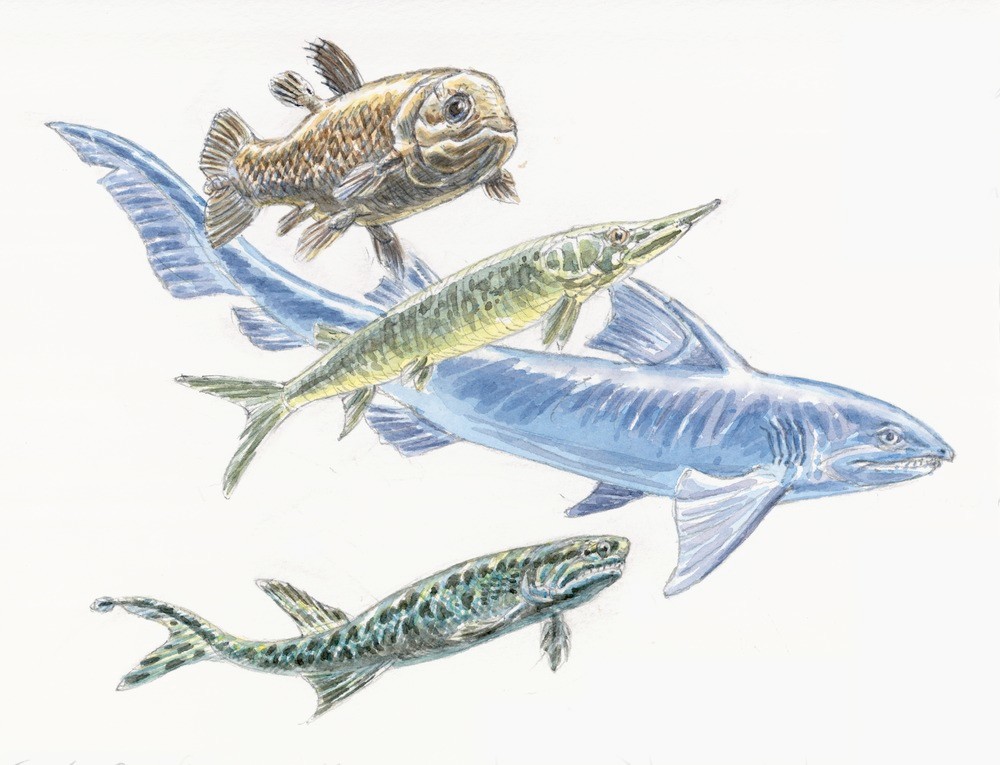| P number: | P549491 |
|---|---|
| Caption: | Aspidorhynchus, a Cretaceous fish. |
| Description: | During Cretaceous times, a number of additional cartilaginous fish evolved, including the shark Hybodus (bottom). Ray-finned fish dominated the seas, including Aspidorhynchus (middle). Lobe-finned fish first evolved about 420 million years ago, late in the Silurian, and one of these, Macropoma (top), lived during the Cretaceous times. Aspidorhynchus had an elongate body covered in thick scales, and a symmetrical tail that propelled this predator rapidly through the sea water. It resembled the modern gar, although they are unrelated; its nearest living relative, the bowfin, lives in fresh waters of North America. Hybodus resembled the modern Blue Shark, although it is smaller. It must have been a ferocious carnivore, with sharp pointed front teeth to slice into its prey, and blunt back teeth for crushing bone and shells. The lobe-finned fish included coelacanths, like Macropoma. They had a bony skeleton and scales, like ray-finned fish, but their paired pectoral and pelvic fins were long muscular lobes. Fish are cold-blooded vertebrates with a braincase, fins for swimming and gills to take oxygen from the water (although some also have lungs). They therefore differ from other aquatic creatures like invertebrate molluscs or crabs; amphibians and reptiles, which have lungs and limbs rather than gills and fins; and whales and dolphins which are warm-blooded mammals. Fish are the first vertebrates, having evolved during the early Cambrian over 500 million years ago. |
| Photographer: | Unknown |
| Copyright statement: | NERC |
| Orientation: | Landscape |
| Size: | 381.05 KB; 1000 x 765 pixels; 85 x 65 mm (print at 300 DPI); 265 x 202 mm (screen at 96 DPI); |
| Average Rating: | Not yet rated |
| Categories: | Best of BGS Images/ Artworks |
Reviews
There is currently no feedback

